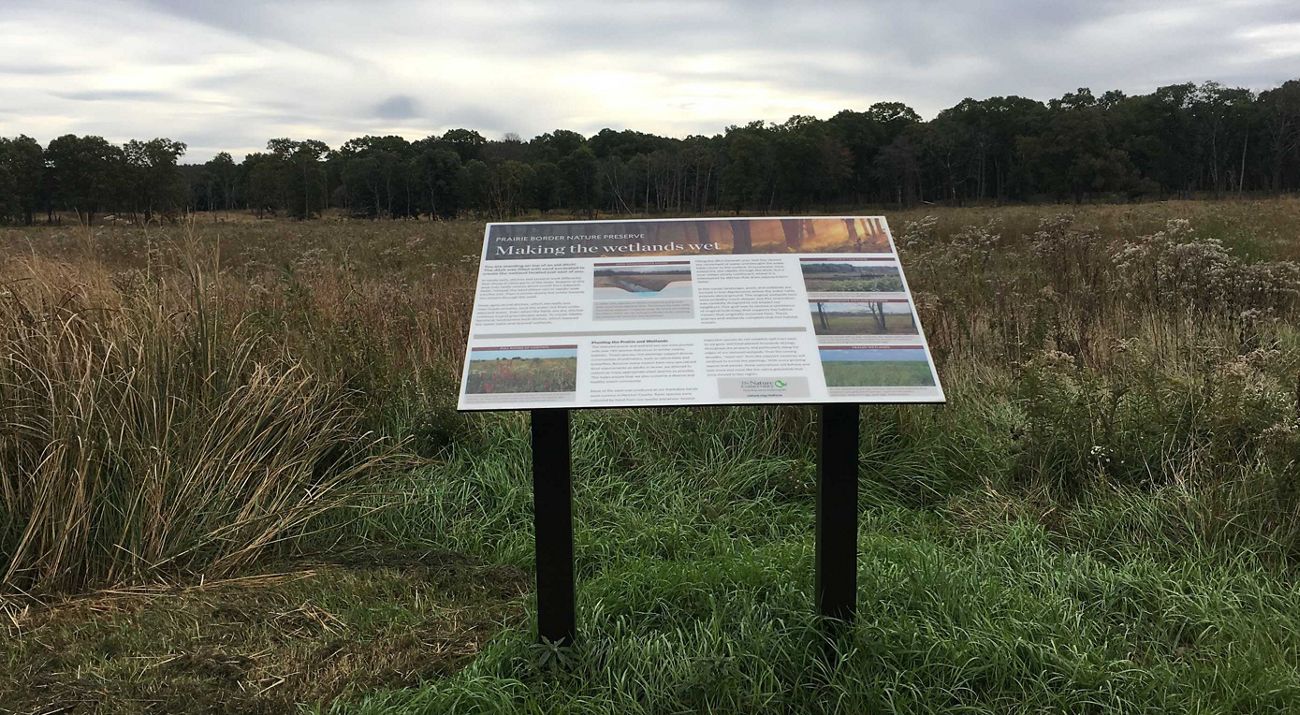Description
Why You Should Visit
When arriving at Prairie Border Nature Preserve, you'll be standing in what was once the southern portion of the Grand Kankakee Marsh.
Three hundred years ago, depending upon the season, your knees may well have been wet.
In pre-settlement times, the Kankakee River was inseparable from its wetlands. Known to the Potawatomi Indians as the Aukiki (land of wolf and river), the Mawhahkeki (wolf country) or simply Kiakiki (swamp country), the river and marsh were one. Freshwater wetlands and the meandering river covered nearly 1 million acres.
This was a bountiful land for the Potawatomis. They lived on the low sand rises scattered throughout the wetland, taking advantage of the plentiful fish, wildlife and waterfowl here.
Early settlers called this area the “Grand Marsh of the Kankakee.” Like the Potawatomi, early pioneers used the marsh wildlife for subsistence. While fur trapping drove early economic activity, the region’s vast numbers of waterfowl soon attracted attention from across the country.
Newly constructed railroads brought wealthy hunters from faraway places such as New York, Philadelphia, and even Europe to hunt the seemingly infinite flocks of migrating waterfowl.
Progress brought agriculture to the surrounding uplands, and summer haying of the marshlands provided critical forage for livestock. Soon, that livestock grazed the marsh itself, using the sand rises for shelter during the wet seasons, and the marsh proper as the water table slipped downward each summer.
As the economy and culture modernized, the rich wetland wildlife habitats became viewed as unproductive. “Improvements” could reclaim the land for productive use. By the mid-19th century, the wetlands were drained. The Kankakee River was dredged and straightened. The infinite flocks of waterfowl were gone. The Aukiki had been tamed.
Today, this preserve’s restored prairies and wetlands are drier than what you would have seen 300 years ago, but the sandy rises in front of you may well have looked much as they do today—islands of prairie grasses and scattered oaks surrounded by a sea of prairie and marshes.
The Nature Conservancy’s restoration attempts to recreate a bit of that original wetland grandeur, where habitats of wetland, prairie and savanna mixed freely across the landscape. Please enjoy this piece of wildness returned to the Aukiki as you hike our 1.5-mile interpretive trail.
A Unique Partnership
This restoration at Prairie Border is the culmination of years devoted to restoring key habitats that surround Jasper-Pulaski Fish and Wildlife Area. Piece by piece, The Nature Conservancy acquired key lands that impacted our public resources. A collaborative effort by NIPSCO and the U.S. Fish and Wildlife Service identified the resources used to re-wild the site. The Nature Conservancy has led the restoration and is committed to the long-term stewarding of natural resources here and across the state.
What The Nature Conservancy Is Doing/Has Done
Once every 2-5 years, the Conservancy prescribes burns in the Prairie Border's natural communities because we believe that fire is a fundamental tool in restoring and managing the prairie. Other conservation efforts go toward protecting and restoring the savanna and wetland areas, as well as protecting viable populations of plants and animals found at the site.
This work is done in partnership with Indiana Heritage Trust & Natural Resources Conservation Services.
